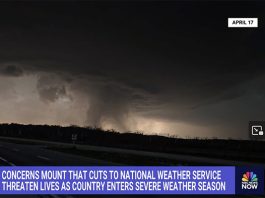
Based on the results of a fourteen year study we’ve learned that areas grazed by livestock are less likely to be invaded by cheatgrass, and more likely to recover well after fire. That means that grazing can be a tool to help us protect rangeland plant communities for our livestock and wildlife. This becomes especially important given predictions that we are facing a hotter, drier climate with a resulting increase in wildfires.
A Little Bit About Cheatgrass
Even if you don’t have cheatgrass, you probably have something like it. Bromus tectorum came to us from Asia and can now be found throughout Canada, northern Mexico and most of the United States. It’s especially prolific on Western rangelands. It’s an annual grass and can be good spring forage. But it dries out quickly and isn’t good for much other than aggravating you by sticking in your socks after you walk through it, even if you’re wearing jeans and boots.

Cheatgrass can adapt quickly to very cold temperatures (-30 C or -22 F), it can change soil chemistry around its roots to prevent other plants from growing, and it’s seeds can remain viable for as much as a decade. But the worst news? Jennifer Balch, who studies fire ecology, found that “cheatgrass actually doubles the likelihood of fire; that it burns twice as much as any other vegetation type.” Some fire managers I’ve spoken with say it burns like an explosion, and fire in cheatgrass races across the landscape.
Grazing Gives Us a Leg Up

Kirk Davies, Tony Svejcar and Jon Bates of the USDA’s Agriculture Research Service began their research on the impacts of grazing on the spread of cheatgrass in 1993. This was a time when Earth First was very active and endorsing removal of livestock from public lands with slogans like “No More Moo in ’92” and “Cattle Free by ’93.” Their assumption was that livestock were responsible for the spread of non-native grasses like cheatgrass, and for destruction of wildlife habitat. The ARS researchers work aimed to test the Earth First hypothesis, or as they put it, “Understanding how livestock grazing affects the recovery of sagebrush rangeland from fire is important to properly manage and protect critical wildlife habitat and an important forage base for livestock production.”
Their study, based on the Northern Great Basin Experimental Range in southeastern Oregon, compared 4 different treatments:
1) ungrazed unburned
2) ungrazed burned
3) grazed unburned
4) grazed burned
The ungrazed areas were exclosures built in 1936. The grazed areas had seen moderate use (30-40% of available forage used) until 1990. Ungrazed areas had about twice as much litter as the grazed sites, but otherwise were very similar when the prescribed burns were completed in the fall of 1993. And then they waited because they wanted to know the long-term results.
They sampled the vegetation characteristics in 2005, 2006 and 2007 (12, 13 and 14 years after the prescribed burn). What they found is that perennial bunch grasses in grazed areas were the same as they had been before fire. But areas protected from grazing had bunchgrass densities almost 2 times less than the grazed areas. Even worse, cheatgrass density in the protected areas was 15 times higher.
When they looked at overall production of vegetation, they found that bunchgrass production increased with burning, but increased more (1.6 times) in grazed areas. When it came to cheatgrass they found “In the areas protected from grazing and then burned, cheatgrass produced more biomass than all the grasses and forbs combined.”
Management Implications

Our researchers concluded that, while it’s true, livestock were not a part of the historic picture when it comes to fire in the West, grazing may now be needed because of new pressures from invasive plants and climate change. They found that:
“Moderately grazing sagebrush plant communities with livestock increased the ability of the native herbaceous plant community to recover from fire and thus, prevented cheatgrass invasion. Fire in rangeland protected from grazing resulted in significant invasion by cheatgrass. The post-fire cheatgrass invasion of the ungrazed areas will probably increase the frequency of wildfire.
“Choosing to exclude livestock may in fact contribute to the demise of sagebrush plant communities and accelerate the decline of sagebrush obligate-wildlife species [such as sage grouse and pygmy rabbits]”
But this is not just a “grazing good, exclusion bad” story. The researchers emphasize that heavy or improper grazing would also be harmful, so the timing and degree of grazing is important. They end by saying “This research also suggests that objectives for land management probably need to focus on specific measurable goals that society has determined are valuable (soil stability, biodiversity, wildlife habitat, livestock forage production, etc.) instead of trying to mimic historical disturbance regimes and conditions.”
This is important research because it addresses some of the assumptions about the link between the spread of non-native grasses and livestock management. If you plan to discuss this and possible changes to land management, you might want to download and read the whole paper, or this article the researchers wrote for the Oregon Beef Producer.
More to Come
One of the problems we face is that annual grasses like cheatgrass and medusahead are already well established as monocultures in some places. Grazing has a role to play in the restoration of these grasslands as well, so we’ll be sharing information on the management of these challenging species in future issues.




